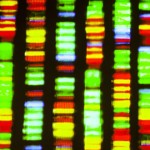The investigators then performed a bioinformatics analysis, which revealed a subtle effect of the BMD-associated SNPs on secondary pre-miRNA structure. The predicted targets for miR-3679 include WHSC1/WHSC1L1, THRAP2, SMAD2, LRP6, SOX4, WNT7A and MGAT5B genes. Predicted targets for miR-4274 include BTF3, LRRC1, SOCS5, RAB10, FGR, RABGEF2 and ESRRG genes. The gene targets of miR-3679, in particular, are associated with cell cycle, differentiation and tissue development, making them intriguing candidates for understanding osteopathology. Thus, from their data, the investigators hypothesize that not only could the overexpression of microRNAs contribute to the osteoporotic phenotype, but also that these gene targets may be critical to the process of osteoporosis.
Lara C. Pullen, PhD, is a medical writer based in the Chicago area.
Reference
- De-Ugarte L, Caro-Molina E, Rodríguez-Sanz M, et al. SNPs in bone-related miRNAs are associated with the osteoporotic phenotype. Sci Rep. 2017 Mar 31;7(1):516. doi:10.1038/s41598-017-00641-7.

